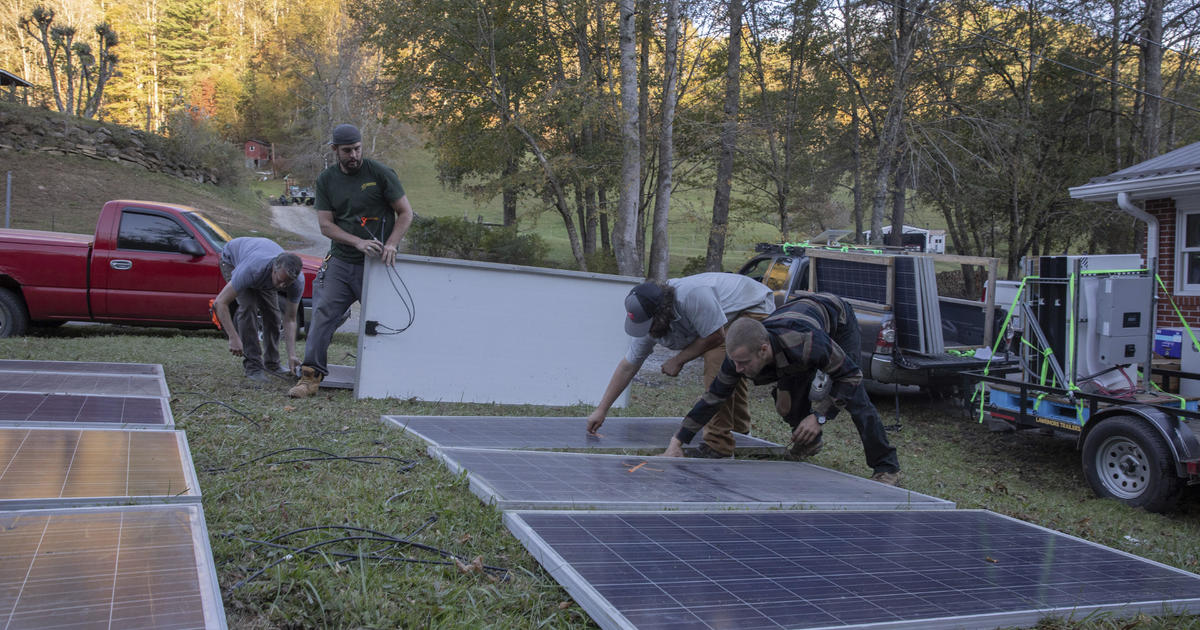The aftermath of Hurricane Helene, a powerful Category 4 storm that ravaged the southeastern United States, left many communities in North Carolina without power. The devastation from flooding and landslides created an urgent need for electricity, particularly for critical medical equipment and necessities like refrigeration and communication. Volunteers and organizations like the Footprint Project have stepped in to provide much-needed assistance by delivering solar-powered solutions, bringing a glimmer of hope to areas left in darkness.
Bringing Light to the Darkness: Solar Power in the Wake of Helene
In the wake of Hurricane Helene, residents in western North Carolina found themselves in a precarious situation without electricity. The storm’s devastating impact left homes and businesses damaged, roads impassable, and infrastructure in ruins. Many relied on gas-powered generators for basic necessities, but fuel scarcity, expense, and the limitations of small generators made this solution unsustainable.
The Need for Sustainable Power
The absence of electricity impacted a wide range of crucial aspects of life, including access to medical care, communication, and essential resources.
- Medical Needs: Residents with pre-existing conditions requiring refrigeration for medication or who relied on medical equipment such as oxygen machines were particularly vulnerable.
- Communication: Without power, recharging phones and accessing vital information became a challenge.
- Basic Resources: Many individuals and families struggled to secure clean water, food, and other essential resources in the absence of refrigeration and proper sanitation.
Stepping In with Solar Power
In response to this crisis, the Footprint Project, a nonprofit organization focused on sustainable emergency response, deployed a network of solar generators and microgrids to provide relief and power for communities affected by Helene.
Delivering Hope and Relief
- Community Hubs: The Footprint Project partnered with local volunteers and organizations to distribute solar generators and batteries to community hubs. These centers provided essential services such as food distribution, medical aid, and charging stations for community members.
- Individual Needs: Individual families facing critical situations, such as those with essential medical equipment requiring power, also received solar-powered solutions.
- Mobile Solutions: Recognizing the limitations of traditional infrastructure repairs in hard-to-reach areas, the Footprint Project employed innovative strategies like deploying solar power systems via helicopter and utilizing mules to transport solar batteries to mountainous communities.
Long-Term Support: A Sustainable Solution
The Footprint Project’s mission extends beyond immediate relief. The organization aims to provide long-term solutions for communities devastated by disasters, including those still without electricity weeks after Helene’s impact.
The Challenge of Long-Term Recovery
- Rebuilding Infrastructure: The extent of the damage caused by Hurricane Helene required significant rebuilding efforts, with roads and bridges requiring repairs.
- Connecting Communities: The Footprint Project and other organizations were working to bring power to areas with damaged infrastructure, providing a crucial lifeline to disconnected communities.
- Bridging the Gap: Even as utility crews made progress in restoring power, the Footprint Project provided essential support by powering critical resources until permanent power was restored.
Takeaway Points
Hurricane Helene highlighted the crucial need for sustainable and resilient power solutions in the face of climate-related disasters. The Footprint Project’s efforts demonstrated the effectiveness of solar power in providing critical support and restoring hope in disaster-stricken communities.
- Adaptable Solutions: The organization’s approach emphasized flexibility and resourcefulness, deploying solutions that adapted to the specific challenges of each community.
- Collaboration and Partnership: The success of the Footprint Project’s efforts depended on collaboration with local organizations, volunteers, and residents.
- Long-term Vision: The organization’s commitment to providing sustainable solutions, even long after the initial disaster, highlighted the importance of building resilience in communities vulnerable to climate change.




